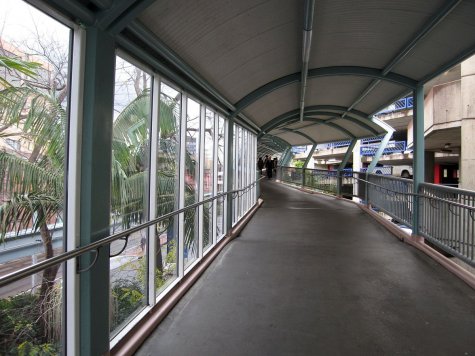The exterior of the restaurant was modest. When I saw the short stools, I knew that we were in for a Beijing-style experience.
The tapestries on the wall seemed foreign to us as Southern Chinese.
Adam and Eric said that the grape leaves hanging from the ceiling mimicked a natural form of cooling in China.
Having left Beijing less than 2 weeks earlier, Eric led ordering from the menu. We asked for the meat and the noodles to not be too spicy.
The dumplings were definitely a northern style.
We thought we need more food, and ordered the wraps. They were bigger and spicier than we had expected.
There’s no doubt that the noodles are handmade and fresh.
Having finished lunch, we looked at the other restaurants in the plaza. Across the way was a Noodle Bar … not to be confused with the Chinese Noodle Restaurant we had just left.
Then, there was a Dumpling Restaurant, although we had had dumplings in the Noodle Restaurant.
Finally, there was the Chinese Noodle House, not to be confused with the Chinese Noodle Restaurant. Given enough time, we might have eventually tried all of them.
Chinatown is close to the city campus of the University of Technology Sydney, on Haymarket. The clock tower is part of the Blake Library.
We looked through the glass doors of the library, but didn’t go in.
A few doors down, we found an open door and entered the building. As we wandered around, we were entertained to find a vending machine with packaged meals, presumably for desperate students.
We didn’t see any students. The courtyard was vacant.
The Market City building across the street takes up a whole block.
We wanted to continue westward, but the direction around the buildings wasn’t clear.
The elevated walk by the monorail seemed to lead to the right direction.
We were approaching the Powerhouse Museum from the back side.
The Powerhouse Museum specializes in science and design, in the remodeled former Ultimo Power House.
The museum is a complex of adjacent spaces. The Boulton and Watt steam engine installed in 1785 in a brewery in Birmingham, England was removed from service and shipped to Sydney in 1888.
From the second floor, we had an overlook of some exhibits.
I wasn’t particularly interested in the pottery. Our family wandered off to pursue different interests.
I sat by the inside playground watching kids crawling in and out of nooks.
When my sons showed up, they played with the pulls. I expect they’re older than the target audience for the installation.
The museum was about to close, so we only got a few minutes in The Odditorium. This temporary exhibit matched up a few “odd” items from storage, combined with labels by Shaun Tan, an author of picture books. The Licorice Allsorts Shoe, a tricycle in the parade closing the 2000 Olympics, was labelled as “Guide Dog Testing Device 6”, with a description of a purpose of assessing abilities to retain composure under distraction.
With the sun setting, we walked back to Ultimo train station with a plan to explore an inner west suburb. We thought that we were headed towards Newtown, and accidentally boarded an express train that skipped the station. Some locals advised us on the direction back. The Newtown station put us on King Street, where we wandered looking for a good restaurant alternative.
Thai Passion was a modest restaurant with high quality food.
Newtown is a suburban neighbourhood. We’re not barflies, so there wasn’t much for us to do in the evening.
From the inner west suburbs, we rode the train back to the north shore, and packed to leave the next morning. We had scheduled to pick up a minivan for the drive to Brisbane.
[Start a large-image lightbox screen show over this blog post (in a supported browser)]
[See the Chinese Noodle Restaurant webphotos album (with a slideshow option)]

[See the University of Technology Sydney webphotos album (with a slideshow option)]
[See the Powerhouse webphotos album (with a slideshow option)]
































